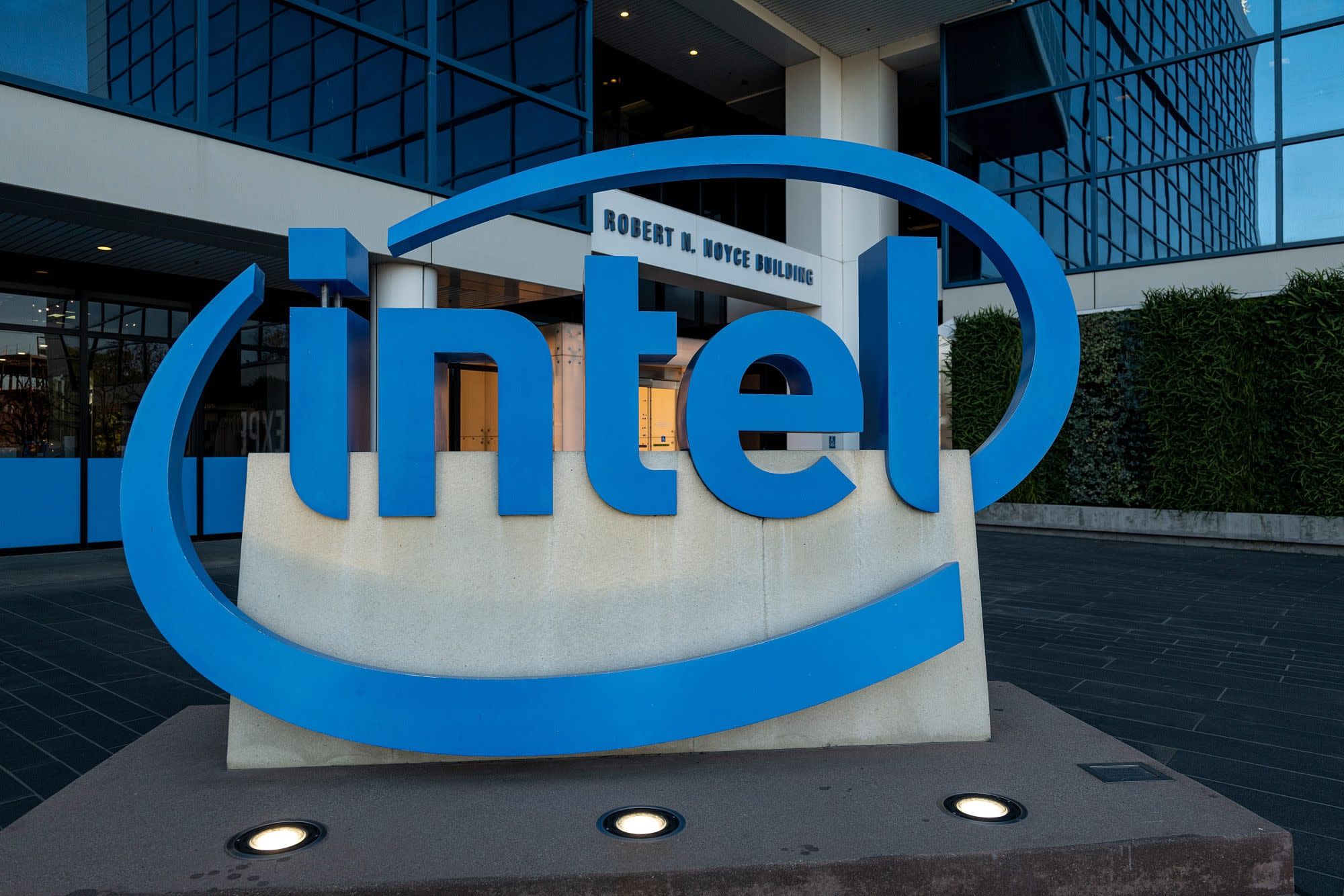Intel Falls Most in Three Months on Data Center Sales Slump

(Bloomberg) — Intel Corp., the biggest chipmaker, fell the most in three months after reporting a drop in data center revenue and a steep decline in gross profit margin, a sign it’s losing market share to rivals and customers who are designing their own components.
The PC business performed better on continued demand for laptops that run Intel processors. But the company’s Data Center Group generated first-quarter sales that fell 20% from a year earlier and missed Wall Street estimates. The unit is Intel’s most profitable businesses, so the lower revenue dented overall margins.
New Chief Executive Officer Pat Gelsinger inherited a company that’s struggling with production technology that was once the foundation of its industry dominance. Delays have allowed other chip companies to catch up and tempted customers to design their own components. Intel argued the server business is going through a temporary slump caused by too much inventory. The first quarter was the bottom and growth has returned, executives said.
That didn’t diffuse questions from analysts on a conference call focused on whether Intel is losing market share and when profitability will start to expand. Gelsinger said Intel is now in “investment mode” during a critical period for its return to leadership, and promised he’ll deliver products that are again the best in the industry.
“The days of Intel having a stranglehold on this business have gone,” said Logan Purk, an analyst at Edward D Jones & Co. “The competitive landscape has shifted and it’s shifted quickly. That is going to weigh on this business.”
Intel said its gross margin, the percentage of revenue remaining after deducting the cost of production, was 55.2%, down more than five percentage points from the same period in 2020. This is a key indicator of the strength of its manufacturing and product pricing. Intel has historically delivered margins above 60%.
The shares fell as much as 7.5% to $57.90 as trading opened Friday in New York. It was the biggest drop since Jan. 22. Investors had been optimistic about Gelsinger’s recovery plan, pushing the stock up 26% this year through Thursday, after it declined 17% in 2020 and lagged far behind its rivals.
The Santa Clara, California-based company raised its full-year sales forecast slightly to $72.5 billion. While that’s down from last year’s record $77.87 billion, the company still gets multiple billions of dollars more in sales than faster-growing Taiwan Semiconductor Manufacturing Co. and Samsung Electronics Co. Those companies though, have passed Intel in manufacturing technology and are spending heavily to maintain the gap with budgets the U.S. company will struggle to match, according to Purk of Edward D Jones.
Amazon.com Inc. and other big cloud providers are designing more chips in-house for their data centers. These businesses have been major Intel customers for years, so the trend is a concern for the company and investors. Advanced Micro Devices Inc. has also rolled out more competitive data center processors recently.
Read more: Amazon Is Designing Its Own Chips in Yet Another Blow to Intel
Intel said sales of chips to cloud service providers fell 29% from the same period a year earlier. That huge drop, according to Intel, was caused by “digestion” — customers pausing orders while they work through unused stockpiles of chips.
While this has happened before and rebounds have followed, investors are increasingly concerned that delays in new Intel products have led this crucial group of customers to shop elsewhere and they won’t come back.
Gelsinger’s revival plan is getting a boost from the PC market, though. The Covid-19 pandemic forced millions of people to work and study from home, driving a surge in purchases of laptops and other computer gear.
Intel’s PC chip division had first-quarter revenue of $10.6 billion, up 8% from a year earlier. Analysts projected $10 billion.
Gelsinger said there’s no sign of a slowdown in PC demand. The company’s 2021 forecast is constrained by supply shortages, while profitability is being squeezed as costs increase and the company competes aggressively to win market share, he added.
“We are here to win and we’re going to be very competitive in our approach to gain market share,” he said.
For more articles like this, please visit us at bloomberg.com
Subscribe now to stay ahead with the most trusted business news source.
©2021 Bloomberg L.P.




